5 Dangerous Outdoor Dining Arrangements to Avoid
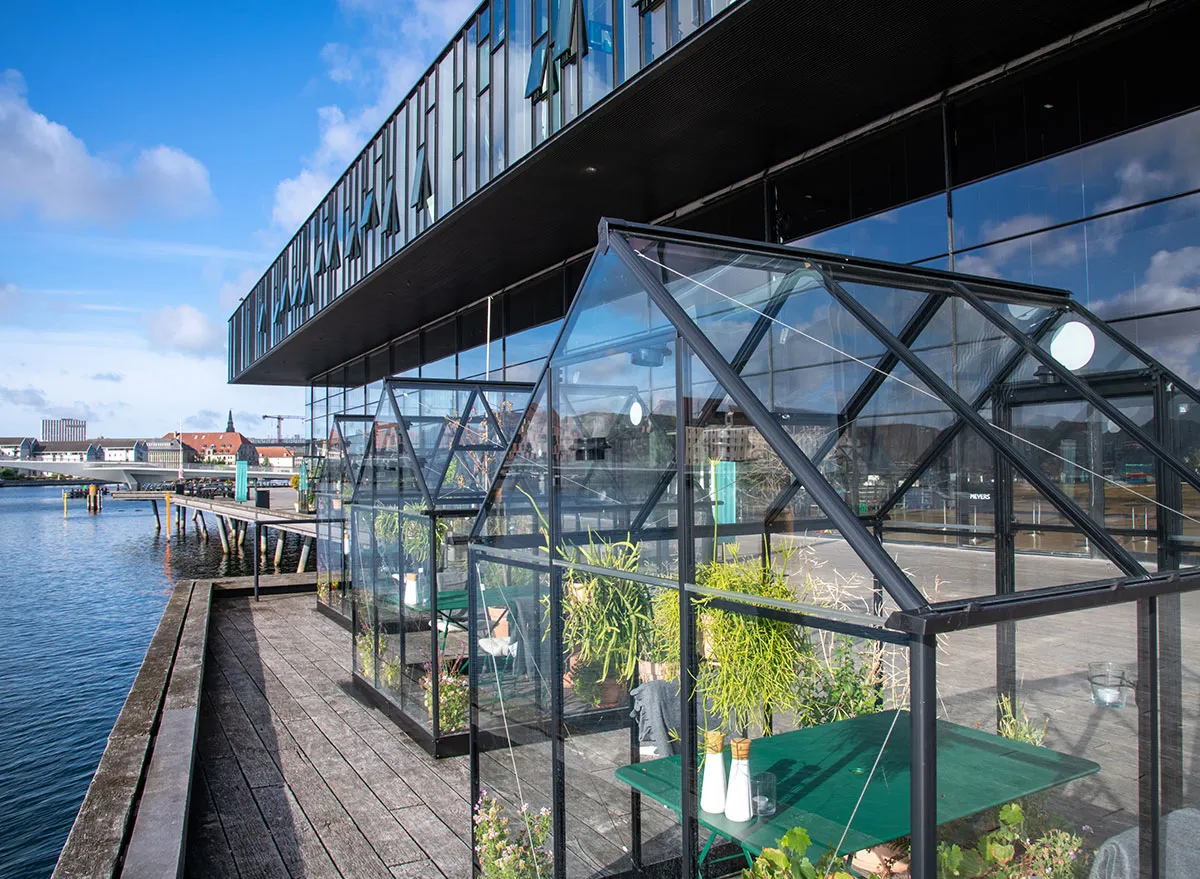
While many daily activities have changed as a result of the coronavirus pandemic, going out to eat at a restaurant remains one of the most difficult normalcies to pull off safely. Luckily, the industry has been able to cope thanks to guidance from health experts and cooperation from mother nature by opening up sidewalk, patio, and curbside dining to welcome back customers. (Although, as cases rise, some states have made the decision to cut on-premise dining altogether.)
As winter approaches, some operators are altering their outdoor seating areas in ways that could actually be potentially dangerous to diners. To keep yourself, your family, and friends safe, make sure you're all avoiding these potentially risky dining arrangements below. (Related: 9 Restaurant Chains That Closed Hundreds of Locations This Summer.)
Private bubbles
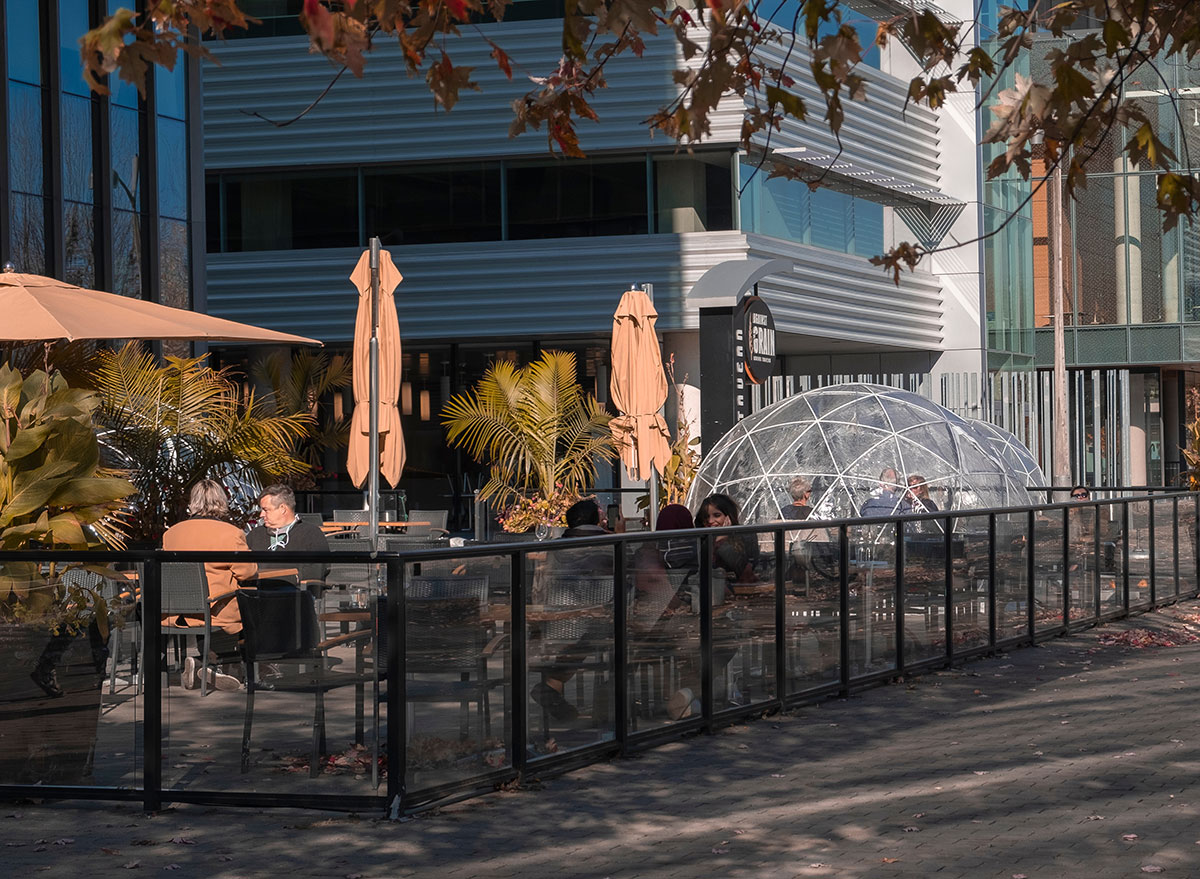
They may look like something out of a NASA colony experiment, but globular outdoor dining bubbles have been a viral sensation when it comes to how restaurants are dealing with the pandemic. But even though it might seem like a brilliant solution for eating out in adverse weather, you're still not completely safe just because you're literally in a bubble. In this case, anyone you're dining with—or even your server—could be putting you at risk.
"Imagine that somebody is infected and sitting at a table. When they're breathing and talking, they're releasing viruses into the air that behave like cigarette smoke," Linsey Marr, a civil and environmental engineering professor at Virginia Tech, told Good Morning America. "If there's poor ventilation, that smoke or those viruses can build up in the air, leaving other people breathing them, too."
Tiny houses
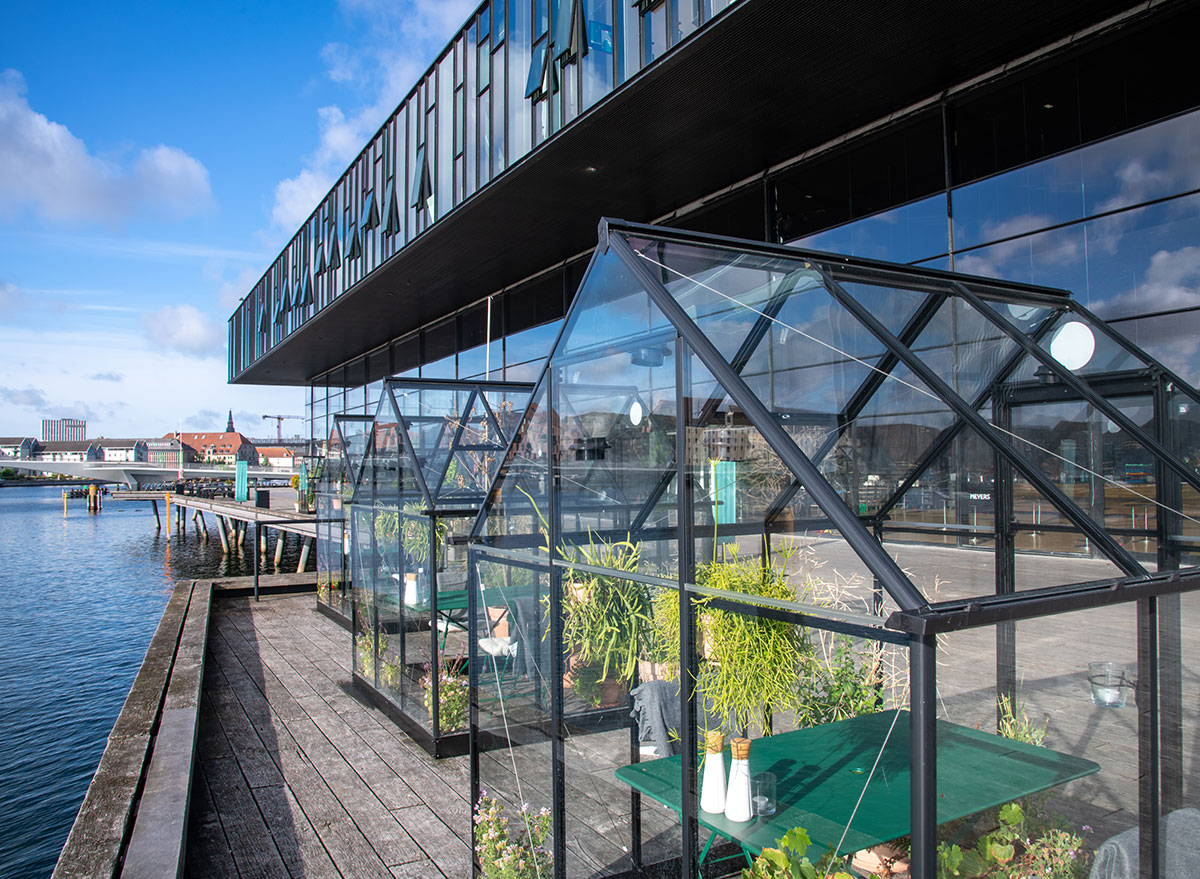
The same can be said about the tiny houses that seem to be popping up at more luxe dining destinations.
Marr recommends taking about 20 minutes between seatings to allow fresh air to completely circulate through these types of units. She also adds that this method of outdoor dining is best suited for couples, families, and people who live together, saying, "I feel it's only prudent to be with people in your own household."
Walled tents
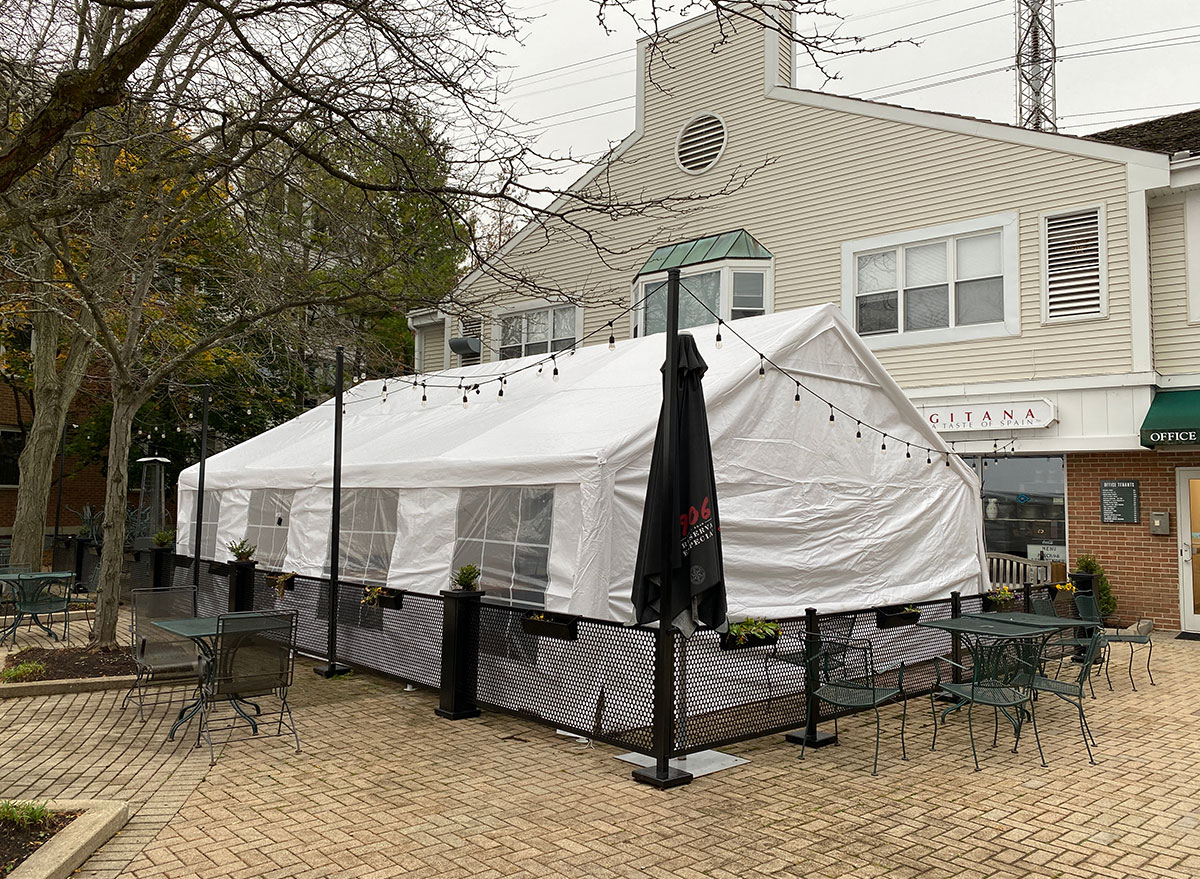
Let's be honest: no one wants to eat dinner as frigid wind whips across their tables. This has led many restaurants to produce walled tents or roofed structures to work as outdoor dining rooms to create a comfortable ambiance for diners. But health experts warn that doing this completely negates the idea of being outside.
"You're actually creating an environment where the virus is within the enclosure," Abraar Karan, M.D., a doctor at Brigham and Women's Hospital and Harvard Medical School in Massachusetts, told The New York Times.
In response to these warnings, cities such as New York have updated their guidelines to include rules that no structures can cover more than two sides of any outdoor dining area, stating that any space violating these rules will be fined or treated as indoor seating with the same strict requirements.
Tightly packed seating areas
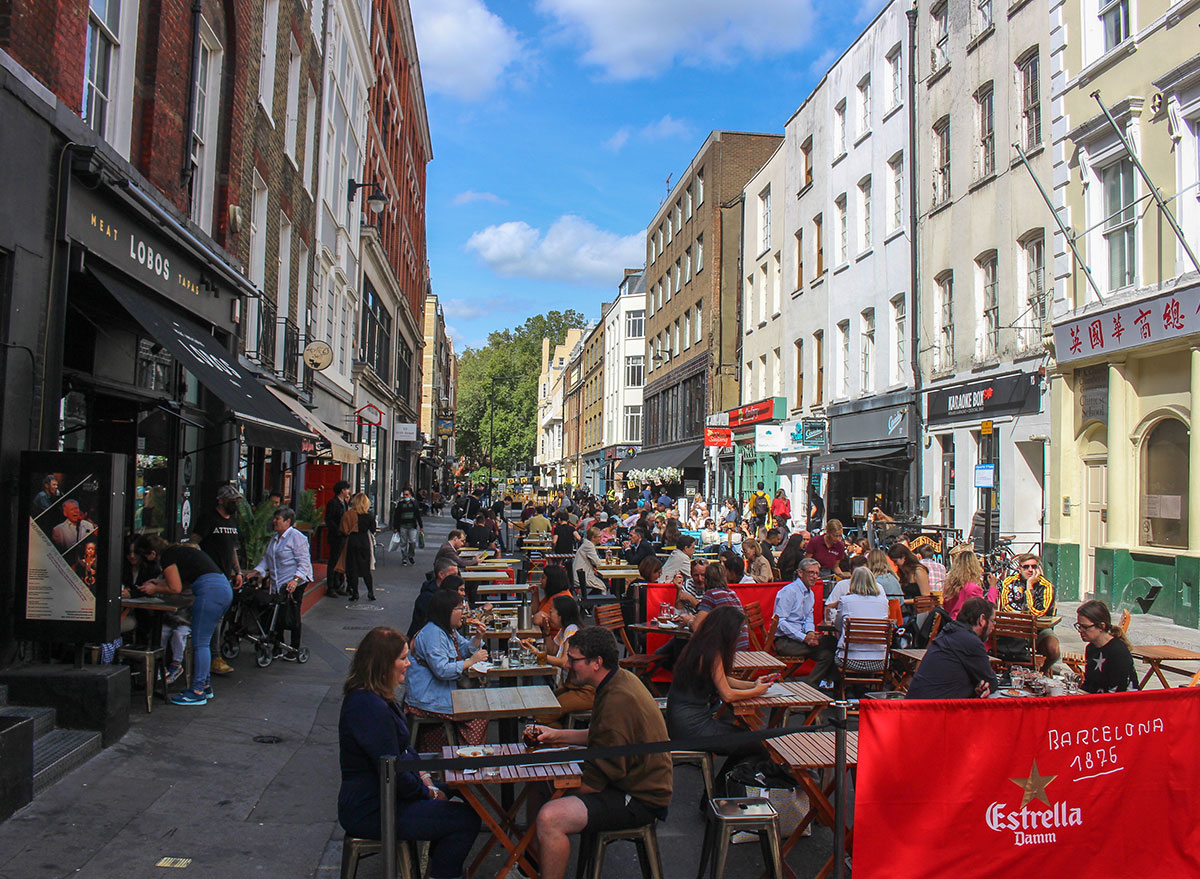
Moving tables onto the sidewalk and street majorly reduces the likelihood of spreading the virus due to poor ventilation indoors. But even being seated outdoors doesn't completely remove the risk, especially if tables are seated too close to one another to observe the recommended social distancing rules of six feet between them or more. According to a report from the US Centers for Disease Control and Prevention (CDC), respondents to a survey who had visited a restaurant in the previous two weeks were twice as likely to test positive for COVID-19 than those who did not, including establishments with outdoor and patio seating.
And it may not even matter if your dinner date has a clean bill of health: Another recent study from Riken and Kobe University in Japan used a diagnostic model run through a supercomputer to find that sitting next to someone who is contagious is more dangerous than sitting across from them, making any lack of space between your seat and other diners around you a potential risk.
Loud patios
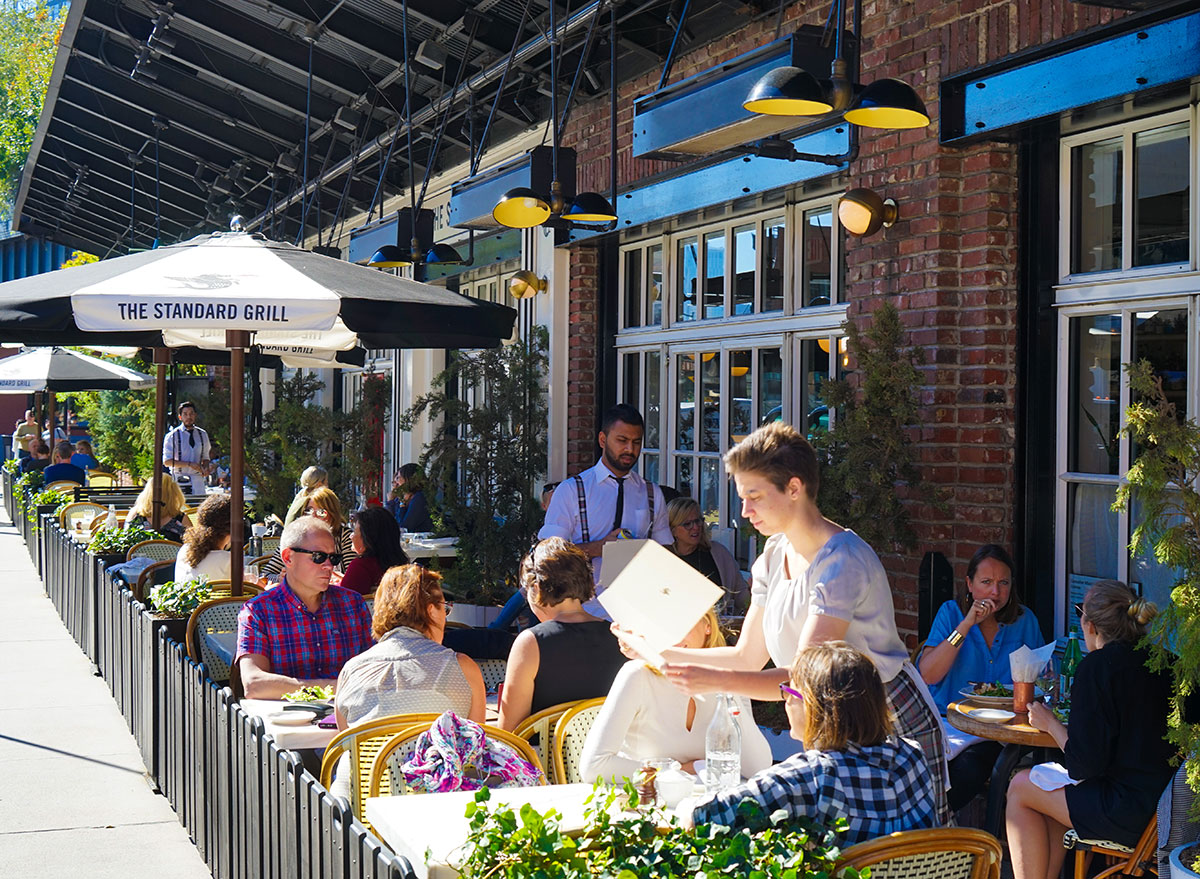
It's not just colder areas of the country that need to worry about the increased risk of exposure while eating outdoors. Experts also warn that people speaking loudly or shouting increases the number of droplets that carry the virus into the air. Because diners are rarely wearing masks while they eat or drink, loud restaurants can prove to be an especially dangerous place for spreading the disease—even outdoors.
"If someone's infected, they're going to release viruses in aerosols as they talk. And so if we can, we should try and keep our voices down," Marr told Good Morning America.
If you're looking to stay safe, choose a restaurant, cafe, or bar that isn't blasting background music or forcing people to shout across the table.
For more restaurant safety tips, make sure to sign up for our newsletter.








